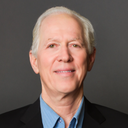I got a consult with a plastic surgeon regarding face lift. He told me that, for a best and guaranteed result over time, he places permanent and non absorbable polyester suture named Ti-cron. I suffer from an autoimmune disease and possibly I don't want to insert foreign material in my body. As from your experience, do you place always these permanent suture performing a face lift? And, if you don't place them, will the result last shortly or disappear in a few months? Thank you
Answers (15)
From board-certified doctors and trusted medical professionals
Dr. Larry S. Nichter, MD, MS, FACS

Dr. Larry S. Nichter, MD, MS, FACS
Board Certified Plastic Surgeon
Answer
Dr. Raymond E. Lee, MD

Dr. Raymond E. Lee, MD
Board Certified Facial Plastic Surgeon
Answer
Dr. John Michael Thomassen, MD

Dr. John Michael Thomassen, MD
Board Certified Plastic Surgeon
Answer
Dr. Kevin Sadati, DO

Dr. Kevin Sadati, DO
Facial Plastic Surgeon, Board Certified in Otolaryngology – Head and Neck Surgery
Answer
Dr. Philip Solomon, MD, FRCS

Dr. Philip Solomon, MD, FRCS
Certified Facial Plastic Surgeon
Answer
Dr. Ryan Chastant, MD
Dr. Ryan Chastant, MD
Board Certified Otolaryngologist
Answer
Dr. Graeme J. Southwick, MBBS, FRACS
Dr. Graeme J. Southwick, MBBS, FRACS
Specialist Plastic Surgeon
Answer
Dr. William H. Sabbagh, MD
Dr. William H. Sabbagh, MD
Board Certified Plastic Surgeon
Answer
Dr. William Portuese, MD
Dr. William Portuese, MD
Board Certified Facial Plastic Surgeon
Answer
Dr. John A. Standefer Jr., MD, FACS
Dr. John A. Standefer Jr., MD, FACS
Board Certified Facial Plastic Surgeon
Answer
More Facelift Questions
See all Facelift Q&AWE SEND PRETTY
EMAILS
What’s trending? Who’s turning heads? Which TikTok myths need busting? We’ve got you. No fluff, no gatekeeping—just real talk. Get our free, unfiltered newsletter.